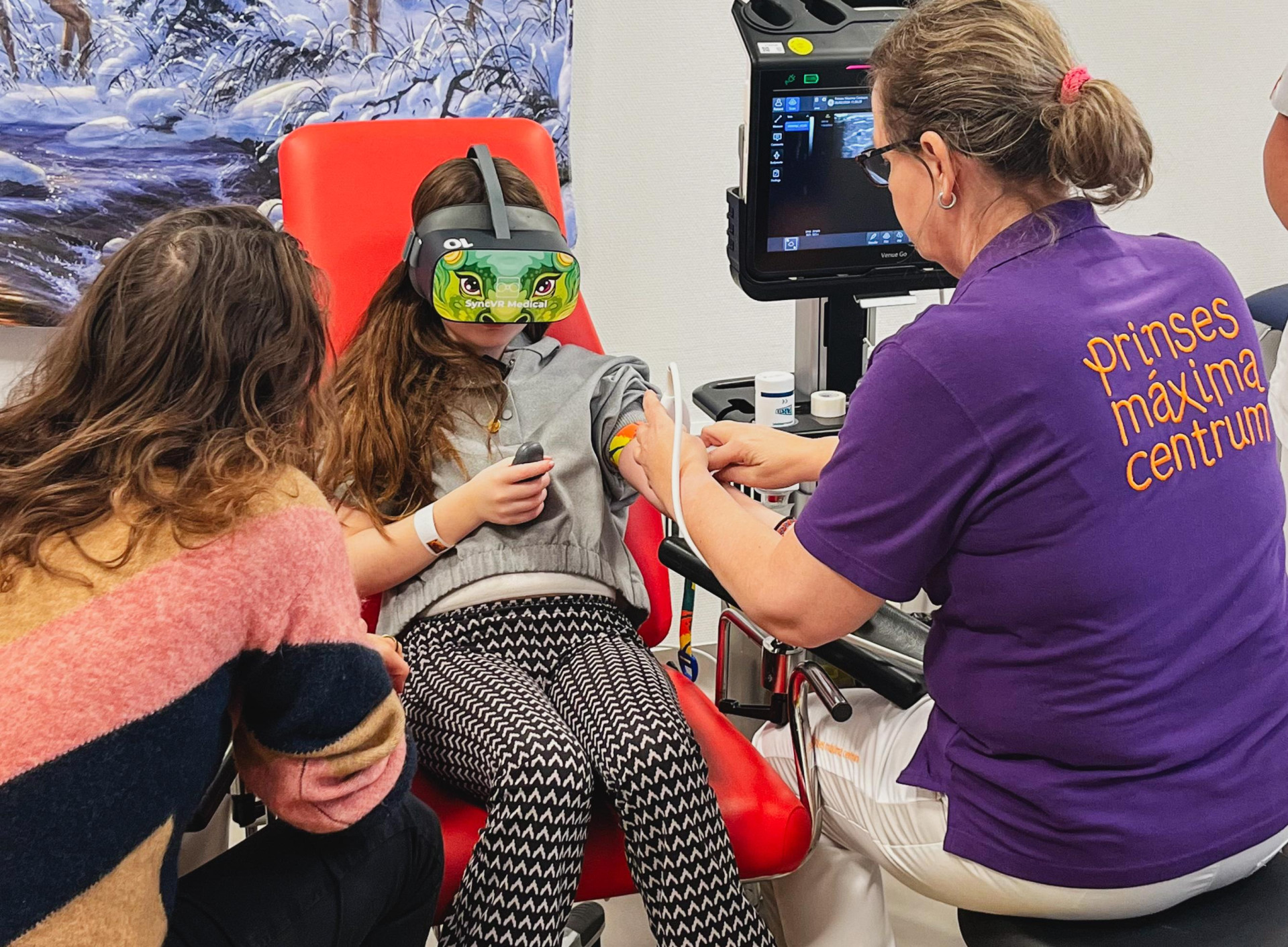Liv (12) always chooses to wear the VR headset when she gets blood collection, usually with a game. In the treatment room, everything goes according to her ‘plan’. VR headset on, arm in position for Rika, who disinfects and then counts down for the blood draw. Meanwhile, Liv tells her mother what she sees in VR (‘trays’ and ‘cubes’) and what level she is at. Everything goes quickly: before she reaches level 12, she is done and waves goodbye to Rika.
Fans
Rika van der Kaa, a nurse anesthetist and member of the VAS team, is skilled when it comes to injections and calls the VR glasses ‘the magic word’. She's enthusiastic: ‘I recently had a child who didn't feel a thing and was still sitting with his arm in the right position after the injection.’ Medical educators Maaike Elders and Marieka Portegies are also fans of the VR glasses that the Máxima Center has: ‘We like to offer VR glasses, especially for children from about five years old who are difficult to distract. When we use a search book, they can still look away and sometimes it is difficult to concentrate. VR glasses close their eyes and transport them to another world.’
On Safari
‘VR movies usually last two to four minutes. That's long enough for a medical procedure like a puncture,' Rika continues. ‘With some children we tried all kinds of things, and the VR glasses are new, they don't have them at home, which gives a different focus.’ The children's favorite VR movies are games, safari, deep sea, skydive or the roller coaster. The effect depends on the age and preference of the child. Maaike: ‘You really see children moving and touching (in a vacuum) when they want to pet an elephant or a dolphin. It seems very real. We also use VR glasses to prepare a child. For example, we have a movie for children undergoing a radiological examination. The room of this department is exactly simulated in VR and the children ‘walk’ in it. It works very well.’
Future
VR glasses in preparation for radiology examination is one of Máxima Center's care improvement projects to reduce stress, pain and anxiety in children with cancer. A next step is the use of specific VR software for children after surgery, during dressing changes, or in prolonged pain. Again, VR glasses will play a central role. For example, when children with long-term pain use VR glasses and a pain app, they experience more control and self-confidence. This results in less sedation and pain medication. Because these types of care improvement projects are outside the regular healthcare budget, the Princess Máxima Center Foundation is currently raising funds to pay for them.


